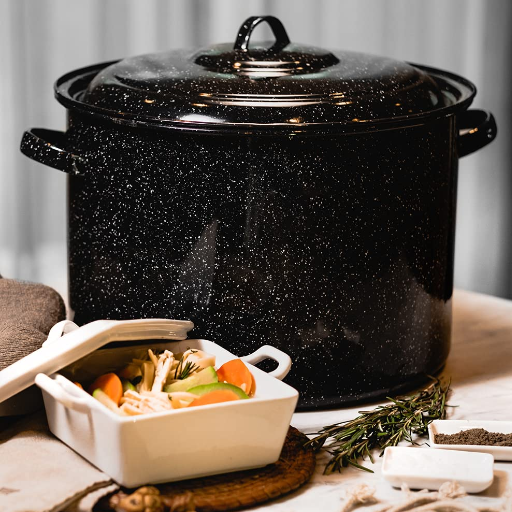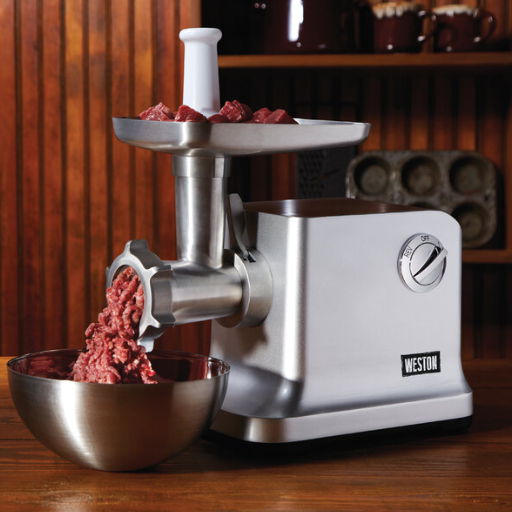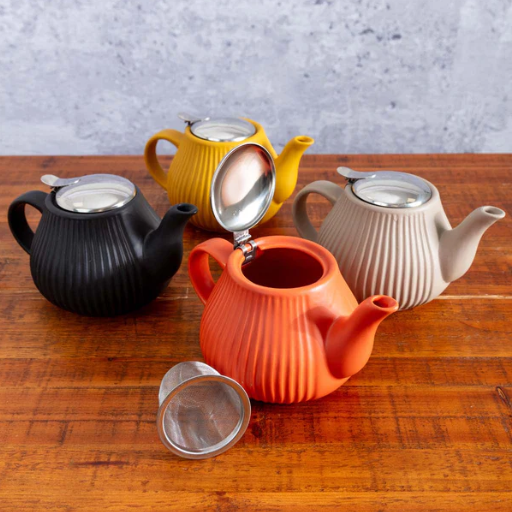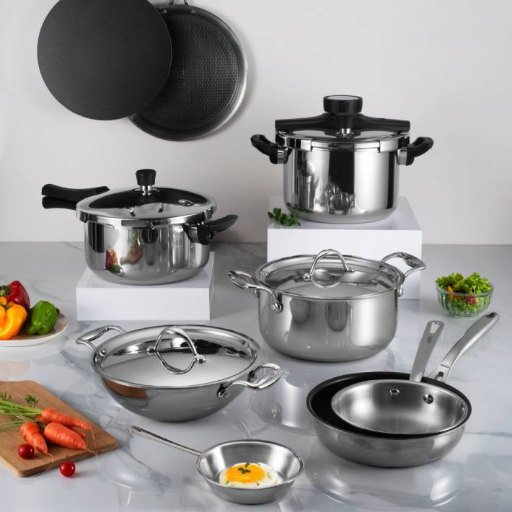Turkish tea, renowned for its rich flavor and cultural significance, holds a special place in the heart of Turkey’s traditions. Prepared using a unique brewing method with a double tea kettle, known as a “çaydanlık,” this beverage is more than just a drink—it’s a symbol of hospitality and togetherness. This blog post will explore the history and importance of Turkish tea, give a detailed explanation of how the double tea kettle works, and share step-by-step instructions to help you brew a perfect cup at home. Whether you’re a tea enthusiast or simply curious about Turkish culture, this guide will provide you with everything you need to savor this timeless tradition.
What is a Turkish double tea kettle and how does it work?

The double kettle of Turkish origin, “çaydanlık,” consists of two stacked kettles. The larger bottom kettle is used to boil water, while the smaller top kettle is used to brew tea concentrate from loose tea leaves. In Turkish tea preparation, boiling water from the bottom kettle is poured into the top kettle around the tea leaves to make a strong brew. The hot water left in the bottom kettle is used to dilute the tea to desired strength in separate cups. The dual system enables customization, ensures the tea is kept warm for long periods, and marks its significance in Turkish culture.
Understanding the anatomy of a double tea kettle
A double tea kettle, also known as a samovar or tea maker, consists of two main parts designed for simultaneous brewing and heating. The lower kettle serves as a reservoir for boiling water, typically powered by electric heat or an integrated burner, ensuring a consistent supply of hot water. The upper, smaller kettle is crafted to steep concentrated tea using a measured quantity of dry tea leaves and hot water from the lower kettle. This two-tiered system is fitted with spouts on both kettles for easy dispensing, allowing customization of tea strength by diluting the brewed concentrate with hot water. Additionally, many double tea kettles feature heat-resistant handles, adjustable temperature controls, and a sturdy base for stability, creating a functional and adaptable tool for both everyday use and communal gatherings.
The role of the top and bottom pots in brewing Turkish tea
The double tea kettle, or “çaydanlık,” is essential for brewing Turkish tea, mastering the balance of flavor and temperature. The bottom pot is filled with water and heated to a boil, serving as the source of hot water throughout the process. The top pot contains the tea leaves and is designed to sit atop the boiling water, steeping the tea gently from the rising steam. This dual-pot system ensures the tea is brewed to precision without becoming too bitter. To serve, a portion of the concentrated tea from the top pot is poured into a glass, then diluted with hot water from the bottom pot, allowing each person to adjust the strength of their tea according to their preference. This method is a hallmark of Turkish tea culture, combining tradition and practicality for an authentic experience.
Why a double tea kettle is essential for authentic Turkish tea
A double tea kettle, or “çaydanlık,” is essential for authentic Turkish tea because it ensures the perfect balance of concentration and dilution, a hallmark of its preparation. The upper pot allows for brewing strong, concentrated tea, while the lower pot keeps the water consistently hot for dilution, ensuring the tea remains warm for extended periods. This setup is especially important in Turkish culture, where tea is consumed leisurely and frequently throughout the day. Unlike single kettles, the double design enables precise control over the tea’s flavor and strength, catering to individual preferences while preserving the tradition’s rich complexity.
How to choose the best double tea kettle for brewing Turkish tea?

While searching for the optimal double tea kettle for Turkish tea preparation, focus on the overall material quality such as stainless steel which provides long-lasting use and guides heat to parts of the kettle. Verify that the kettle possesses an ergonomic handle and a lid that fastens securely to ensure comfort and safety during use. Also, confirm that the teapot capacity is large enough to accommodate the size of your household or your consumption patterns. At the same time, pay attention to the aesthetic appeal of the kettle as it should blend with the interior of your kitchen, or better yet, consider those that are suitable for your type of stove. Other considerations that can make the kettle more ideal include surfaces that are easy to clean and gentle pouring spouts.
Stainless steel vs. traditional copper kettles: Pros and cons
When choosing between stainless steel and traditional copper kettles, there are several important factors to consider. Each material offers distinct advantages and drawbacks that cater to different needs and preferences.
Stainless Steel Kettles
Pros:
Durability: Highly resistant to rust, corrosion, and dents, making them ideal for everyday use.
Low Maintenance: Easy to clean and requires minimal upkeep to maintain its appearance.
Affordable: Generally more cost-effective compared to copper kettles.
Modern Aesthetic: Sleek and versatile designs complement contemporary kitchens.
Compatibility: Works well with most heat sources, including induction stovetops.
Cons:
Heat Retention: Does not retain heat as effectively as copper, which might lead to uneven brewing.
Weight: Heavier than copper kettles, which can be less practical for handling.
Traditional Copper Kettles
Pros:
Excellent Heat Conductivity: Heats up quickly and evenly, ensuring consistent brewing.
Unique Appearance: Offers a classic, timeless aesthetic that enhances visual appeal.
Tradition: Carries historical and cultural significance, particularly in Turkish tea preparation.
Cons:
High Maintenance: Requires regular polishing to prevent tarnishing and maintain its shine.
Cost: Typically more expensive due to the material and craftsmanship.
Reactivity: Unlined copper kettles may react with certain substances, potentially altering the taste of tea.
Both materials have their specific strengths and limitations. Stainless steel is a practical, low-maintenance option for modern households, while traditional copper kettles provide exceptional heat performance and a touch of heritage. Your choice ultimately depends on your priorities, whether they lean toward ease of use or preserving tradition.
Electric vs. stovetop double tea kettles: Which is right for you?
Electric kettles are important for boiling water in the least time possible and for specialty teas because of accurate temperature control. They are economical and safe because most of them come with an automatic shut-off feature. Stovetop kettles, however, are loved for their simplicity and long-lasting reliability. As non-electric appliances, they are found in every kitchen and during power outages. Moreover, they provide a more traditional experience of tea making, often adding to the beauty of rustic or classic decors. It is evident that people who enjoy modern functionality and efficiency would enjoy electric kettles, whereas people who appreciate tradition and timeless functionality would prefer stovetop kettles.
Key features to look for in a quality Turkish tea kettle
Material and Durability
A high-quality Turkish tea kettle should be made of robust materials like stainless steel or enamel-coated steel. These materials ensure longevity, resist rust, and are easy to clean. Additionally, they help maintain consistent heat distribution during the brewing process.
Double-Layer Design
Turkish tea kettles typically feature a double-layer design, consisting of a main pot and a smaller teapot on top. Look for a model with a steady and well-fitted stacking system, as this allows for efficient brewing and prevents accidental spills.
Ergonomic and Heat-Resistant Handles
Comfortable, non-slip, and heat-resistant handles are essential for safe and convenient handling, especially since Turkish tea brewing involves prolonged heat exposure.
Compatibility and Versatility
Ensure the kettle is compatible with your stovetop type, whether it’s gas, electric, or induction. Some models also work well for outdoor use, adding versatility to your tea-making experience.
Capacity
Choose a kettle size that matches your needs, whether you’re brewing for a small gathering or a larger group. Typical Turkish tea kettles come in a variety of sizes, offering flexibility for any occasion.
Aesthetic Appeal
Many Turkish tea kettles feature elegant designs with traditional patterns or polished finishes that enhance their appearance. Opt for a style that complements your personal taste or kitchen decor.
By prioritizing these features, you can select a Turkish tea kettle that provides an authentic brewing experience, exceptional durability, and timeless style.
What’s the proper technique for brewing Turkish tea using a double kettle?

Place the Bottom Kettle on the Stove
Pour enough water into the lower kettle and place it on the stove to boil. The kettle should be at least half filled with water.
Measure Out the Tea Leaves and Place them in the Upper Kettle
Take out some loose-leaf black tea, around 1 tablespoon per cup, and put it in the upper kettle.
Boil Water in the Bottom Kettle and pour it into the Upper Kettle
When the water in the bottom kettle is fully boiled, pour some of it in the upper kettle to steep the tea leaves, in this case, over doush.
Allow the kettles to center gently Sort Simmer to the Bottom Kettle
Lower the heat and let water in the bottom kettle simmer, while the tea leaves steep in the upper kettle.
Let to steep over 10 to 15 minutes
Steeping in the upper kettle around 10-15 minutes ensures the flavors develop fully while avoiding overly bitter tea.
Serve Tea in Two Layers
Pour a measured quantity of concentrated tea into each glass. Then, using the hot water from the lower kettle, top up the glass to the desired strength. This can also be adjusted according to taste.
This makes a rich and stunning tea that looks strikingly beautiful, the types of which are associated with and adored in Turkey.
Achieving the ideal tea concentrate in the top pot
To achieve the ideal tea concentrate in the top pot, start by using high-quality loose-leaf tea, typically black tea blends crafted for Turkish tea. Measure approximately two tablespoons of tea leaves for every two cups of water in the bottom kettle. Carefully rinse the tea leaves in cold water to remove impurities and reduce bitterness. Place the tea leaves in the top kettle and allow them to gradually steam as the water in the lower kettle boils. The key to developing the perfect concentrate is patience—allow the tea to brew gently for about 10-15 minutes, ensuring a bold, aromatic flavor without becoming overly bitter. Adjust the brewing time based on personal taste preferences while maintaining the traditional balance of strength and smoothness.
Tips for adjusting tea strength to personal preference
Fine-tuning tea strength is a simple yet impactful way to enhance your tea-drinking experience. Start by adjusting the tea-to-water ratio—using more leaves or less water will create a stronger brew, while fewer leaves or more water will produce a milder flavor. Additionally, brewing time is crucial; extending steeping time intensifies flavor but can lead to bitterness, so aim to find a balance that suits your taste. Water temperature also plays a role—higher temperatures extract stronger flavors quickly, whereas slightly cooler water results in a more subtle infusion. For pre-made brews, you can dilute an overly strong tea with hot water or add ice to tone it down. Experiment with these variables to achieve the perfect balance that matches your preferences.
How does a double tea kettle compare to other tea brewing methods?

A double tea kettle offers a unique advantage over traditional tea brewing methods by providing greater control over the steeping process. With its two-chamber design, one for concentrated tea and another for hot water, it allows users to adjust the strength of their tea in real-time. This method minimizes the risk of over-steeping, which can lead to bitterness, and makes it easier to customize the brew for varying tastes. Compared to single-pot methods or tea bags, the double tea kettle offers a more versatile and precise brewing experience, ideal for tea enthusiasts seeking optimal flavor and flexibility.
Double tea kettle vs. single pot brewing: Taste and convenience
The double tea kettle stands out for its ability to enhance both taste and convenience compared to single pot brewing. By separating concentrated tea from hot water, it provides greater control over strength and steeping time, resulting in a smoother and more tailored flavor without the risk of bitterness. Single pot brewing, while simpler, often lacks this level of precision and can lead to over-steeping or inconsistent results. Additionally, the double tea kettle is more versatile, accommodating diverse flavor profiles in one session, which is particularly useful for tea enthusiasts exploring different blends. On the other hand, single pot brewing is quicker and easier for those seeking a fast, straightforward solution. Ultimately, the double tea kettle excels in delivering a superior and customizable tea experience, while single pot brewing remains a simpler but less flexible option.
Comparing Turkish tea kettles to electric tea makers and samovars
Turkish tea kettles, electric tea makers, and samovars each provide distinct approaches to tea preparation, catering to diverse needs and preferences. Turkish tea kettles are ideal for traditionalists seeking to achieve authentic flavors through a two-tiered system that allows for brewing strong concentrated tea, diluted to taste. They excel in creating the unique taste and ceremony associated with Turkish tea culture.
Electric tea makers, in contrast, are designed for convenience and efficiency. These modern appliances often feature preset brewing options, automated temperature controls, and the ability to steep multiple tea types consistently. While they may lack the cultural richness of Turkish kettles, they are perfect for those who prioritize speed or enjoy experimenting with a variety of teas.
Samovars, on the other hand, are steeped in tradition and often used across Central Asia and Russia. They function as large tea-brewing devices capable of serving multiple guests, making them suitable for gatherings. Similar to Turkish kettles, samovars brew concentrated tea that can be diluted, but they also double as communal symbols of hospitality.
How to maintain and care for your Turkish double tea kettle?

The longevity and Turkish double tea kettle performance is based on the maintenance being done. To maintain, both upper and lower kettles should be cleaned promptly with warm water and mild dish soap to eliminate stains or residue. Never use abrasive sponges or strong chemicals that may inflict harm to the surface because it is detrimental. To get rid of lime deposits from hard water, boiling a mixture of vinegar and water helps. It should be rinsed thoroughly afterwards. Remember to dry the kettle completely after washing in order to avoid rust or discoloration. This is especially crucial when made with stainless steel. Periodically inspect the handles and lids to ensure they remain secure.
Cleaning and descaling tips for longevity
In order to maintain an electric kettle in great condition, caring for it includes routine cleaning and descaling. For cleaning the kettle, the internal part can be rinsed with warm water and the residue wiped using a cloth or sponge. As mentioned above, the kettle should not be scrubbed with anything that could scratch the plaster’s surface or write on it in an abrasive way. To descale a kettle, it is sufficient to pour white vinegar mixed with water in equal proportions into the kettle, boil the solution, and let it sit for 20 to 30 minutes. After that, let the kettle cool down, dump the solution, and rinse the kettle with clean running water to ensure there is no vinegar odor or taste. If there is persisting lime scale accumulation, repeat this process or alternatively try a commercial descaling solution meant for kettles. After cleaning, always ensure the kettle is completely dry to avoid the risk of corrosion and discoloration.
Proper storage and handling of your tea kettle set
Proper storage and handling of your tea kettle set are crucial for maintaining its quality and extending its lifespan. Always store your kettle in a dry, well-ventilated area to prevent moisture buildup and potential rusting. If possible, keep the kettle covered or in a cupboard to protect it from dust and dirt. When handling your kettle, avoid using sharp or abrasive tools that could damage its surface. Ensure the lid and spout are clean and dry before storage to minimize the risk of mold or unpleasant odors. For kettles with removable parts, such as strainers or lids, store them separately or secure them firmly to avoid accidental damage.
References
Frequently Asked Questions (FAQ)
Q: What is the significance of a double tea pot in making traditional Turkish tea?
A: A double tea pot, known as a “çaydanlık,” is essential for brewing Turkish tea. It consists of two stacked pots; the lower one boils water, while the upper teapot is used to steep tea leaves, allowing for a strong and flavorful brew. This method is a key part of Turkish tea culture.
Q: How does a Turkish tea maker differ from a regular electric kettle?
A: A Turkish tea maker usually includes a double teapot setup that allows for simultaneous boiling of water and steeping of tea leaves, unlike a regular electric kettle, which is designed solely for boiling water. This specialized appliance offers a more authentic Turkish tea experience.
Q: Can I use a glass kettle or glass teapot set for brewing Turkish tea?
A: Yes, you can use a glass kettle or glass teapot set to brew Turkish tea, but it is typically done with a stainless steel or ceramic double teapot for optimal heat retention and flavor. Glass sets are often used for serving rather than brewing.
Q: What are the types of Turkish tea sets available?
A: Types of Turkish tea sets vary, including traditional ceramic sets, stainless steel options, and modern glass tea sets. Each set typically includes a double teapot and small, tulip-shaped glasses for serving the tea.
Q: How is Turkish black tea different from other types of black tea?
A: Turkish black tea is known for its robust flavor and is typically brewed stronger than other types of black tea. It is traditionally served in small glasses and often enjoyed with sugar, showcasing a unique aspect of Turkish tea culture.
Q: Is it better to use a stove top or an electric gooseneck kettle for Turkish tea?
A: For an authentic experience, a stove top double tea pot is recommended as it allows for precise control over the brewing process. However, an electric gooseneck kettle can be used for boiling water if convenience is a priority.
Q: Can you explain the role of a samovar double in Turkish tea brewing?
A: A samovar double is a traditional Russian and Turkish brewing device that maintains hot water in a large container and uses a small teapot on top for steeping tea. It is similar to a double tea pot and is used to serve tea continuously, making it ideal for larger gatherings.
Q: How do tea lovers typically maintain their Turkish tea sets?
A: Tea lovers often maintain their Turkish tea sets by regularly cleaning them with warm water and mild detergent. Stainless steel and glass components can be dishwasher safe, but it’s recommended to hand wash to preserve the set’s longevity and appearance.
Q: What is the best tea to use in a Turkish teapot?
A: The best tea for a Turkish teapot is typically a high-quality Turkish black tea, known for its rich flavor and aroma. Popular brands include Çaykur and Doğuş, which are specifically blended for this brewing method.
Q: Are there any modern alternatives to traditional Turkish tea brewing methods?
A: Modern alternatives include electric Turkish tea makers with temperature control and dual tea kettle designs, such as those from the Saki® Store, which simplify the brewing process while maintaining the traditional flavor profile.






